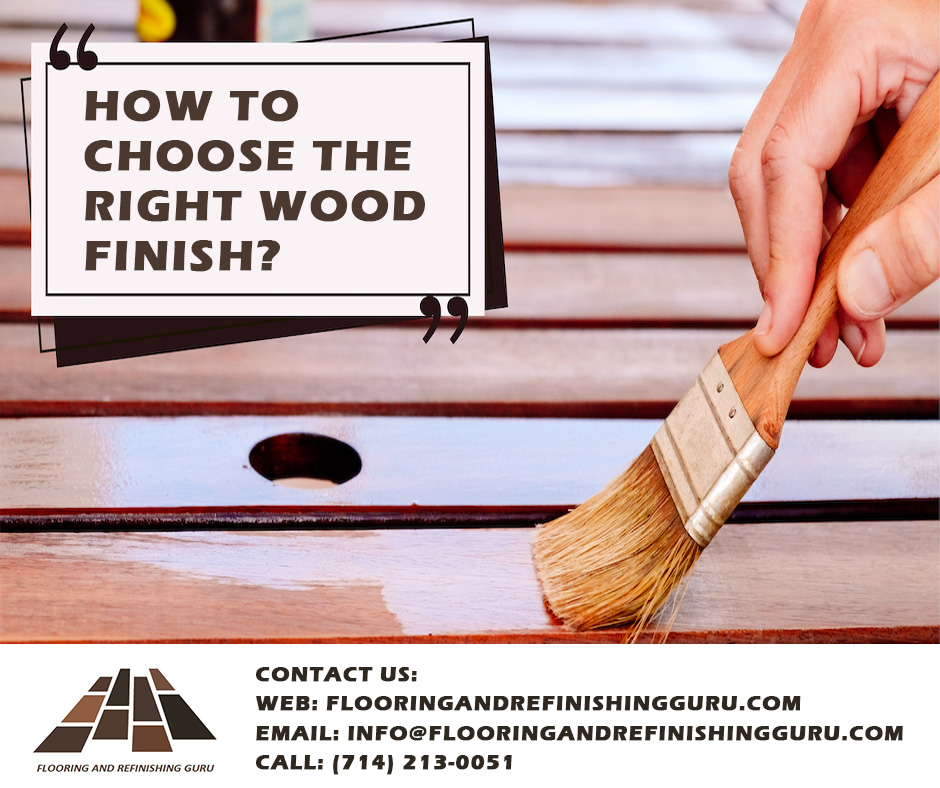
Choosing the right wood finish is an art that blends aesthetics, functionality, and practicality. The decision process is exhilarating and intimidating, whether you are an experienced carpenter or a DIY enthusiast. The ideal finish not only brings out the inherent beauty of the wood but also shields it from daily use’s stresses and the elements.
The appropriate wood rehabilitation must be chosen to prevent your wood work from deterioration, while preserving its beauty. From comprehending the subtleties of different right wood species to assessing durability and environmental effect, this extensive guide seeks to demystify the procedure by offering insightful advice and factors to select the best wood finish. To make an informed selection, contact Flooring and Refinishing Guru, one of the best companies in the USA.
-
Wood Type
Each type of timber has distinctive qualities. Furthermore, the finishing should enhance the wood’s beauty. For example, some woods, like oak, have pronounced grain patterns that look magnificent with clear finishes, and other types would need pigmented finishes to create the appropriate appearance.
-
Optimum Appearance
Think about the aesthetic you wish to accomplish. While pigmented finishes like paints and stains provide color, transparent finishes like oils and varnishes emphasize the wood’s inherent look. On a scrap wood piece, experiment with various treatments to observe the changes therein.
Read More
Different Types of Carpet Flooring
Which Types of Paints Are Used For Furniture?
What is SPC Flooring?
-
Function & Placement
Identify the placement and purpose of the woodwork. Finishing requirements for indoor projects may be different from other projects. Exterior coatings have to be stronger and long-lasting; they should provide better defense against the Sun’s rays.
-
Durability
Consider the durability of the project in different ways: Each coating offer distinctive advantages, such as resistance against chemical, dampness, and scratches. For example, polyurethane and epoxy finishes offer exceptional durability. They are suited for high-traffic areas.
-
Application Method
While finishes may be applied more easily with a brush, some surfaces may need spraying or wiping. Pick a finish that works with the tools and professional experience.
-
VOC Content
Chemicals known as volatile organic compounds (VOCs) can be hazardous to human health and the environment. Look for low-VOC or VOC-free coatings if you are sensitive to fumes or undergoing treatment.
-
Maintenance
Consider the upkeep needed for the selected finish. While some coatings need frequent reapplication or touch-ups, others provide long-lasting protection with minimal maintenance.
-
Compatibility
Choose tasks with previous finishes or wood treatments. If you transition between incompatible finishes, stripping or sanding may be required.
-
Drying Time
If you’re on a tight schedule, manage the drying time. While some finishes cure quickly, others take several hours for converting into a different phase.
Read More
Which Chemicals Are Used in the Finishing of Wood Furniture?
Which is the Easiest Way to Refinish Kitchen Cabinets?
Different Types of Flooring Surfaces
-
Budget
Prices for wood treatments vary, which might affect your decision. Remember that spending on a high-quality finish yields better outcomes.
Types of Finishes
Temporary, semi-durable, and permanent finishes are classifications based on the longevity and resilience of treated surfaces.
Temporary Finish
A temporary finish is a removable surface coat. It is primarily used in the transportation and construction industry. These finishes are not designed to withstand harsh conditions or long-term heat effects.
Semi-Durable Finish
Semi-durable finishes are designed to withstand moderate levels of wear, exposure to environmental elements, and regular use. These coatings are applied on surfaces where durability is important for a certain period of time. Examples of semi-durable finishes include coatings and treatments applied to furniture, indoor walls, decorative items, and consumer electronics.
Permanent Finish
Under normal conditions, permanent finishes are designed to last for an extended period. These coatings are common in applications where long-term durability is essential, such as architectural coatings, automotive paints, and industrial coatings.
Conclusion
Choosing the best wood finish requires careful consideration of some variables, including the wood type, appearance, techniques, VOC content, maintenance, compatibility, drying time, and budget. You can make an informed choice and get the ideal finish for your Right Wood working project by considering the above-mentioned factors.
Contact Flooring and Refinishing Guru for a complete overhaul of your floor!

